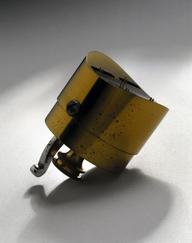

Three Research plus brand mechanical pipettes (20, 200 and 1000 microlitres) made by Eppendorf used in the production of the first Ad26.COV2.S vaccine for COVID-19 by Janssen, Johnson & Johnson, 2020
Pipettes are used to transfer small amounts of liquid from on test tube or flask to another. These were and are essential laboratories tools used during vaccine development and testing.
Making a vaccine requires the skills and knowledge of hundreds of people, working in multiple countries. Drawing on decades long work, researchers at Beth Israel Deaconess Medical Center, worked with Janssen Vaccines, a subsidiary company of Johnson and Johson, to rapidly identify possible candidates for a COVID-19 vaccine in January 2020. After much testing the AD26.COV2.S candidate went into small scale production in Leiden, Netherlands, for further testing and clinical trials. Within 13 months, their single dose vaccine was approved for emergency use in the United States for over 18s in February 2021. In total ,103 countries approved the use of Johnson & Johnson’s vaccine, known by the brand name Jcovden.
The vaccine uses a deactivated human common cold virus, known as an adenovirus, to deliver the genetic code for the coronavirus (SARS-CoV-2), spike protein. This is a protein on the SARS-CoV-2 virus which it needs to enter our cells. Later, if the person comes into contact with the COVID-19 virus, the person’s immune system will recognise the spike protein on the virus and be ready to defend the body against it. The adenoviruses are grown in the PER.C6 cell line, derived from human embryonic retinal cells. These cells are extracted and filtered out during the vaccine’s manufacture.
Details
- Category:
- Public Health & Hygiene
- Object Number:
- 2022-1073
- Measurements:
-
overall: 240 mm x 70 mm x 35 mm,
- type:
- pipettes




